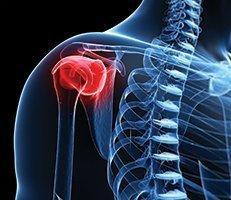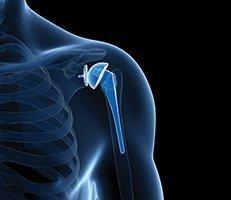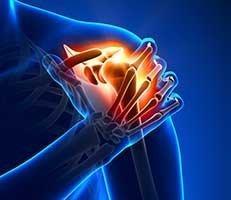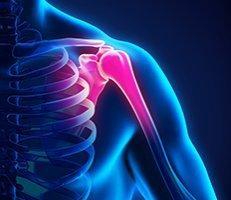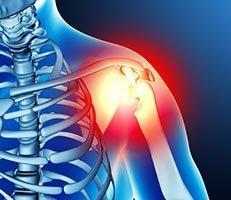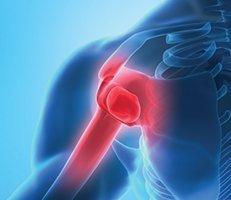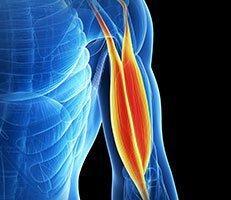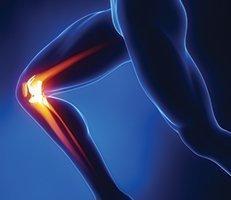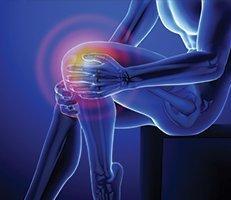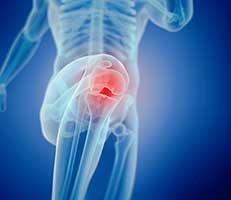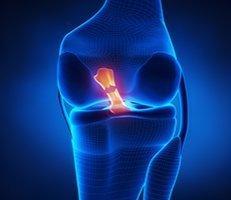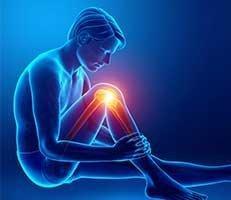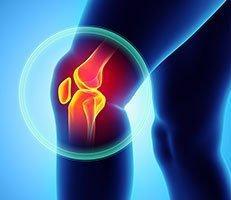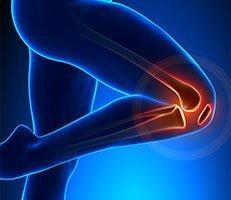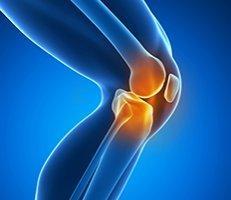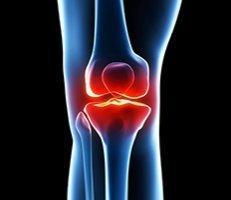Learning to prevent injuries should be an integral part of every athlete’s training routine. Athletes may be able to modify their movements to prevent non-contact ACL injuries, but discerning how they can best move in every situation is difficult. Speaking with a trainer, physical therapist, or sports medicine specialist is a good place to start when thinking about preventing anterior cruciate ligament injuries. Trainers and therapists are able to target weak muscles and prescribe exercises to improve strength, so biomechanics are improved during sports without having to think about it.
Training with jump routines or learning to pivot properly can help athletes prevent knee injuries. These types of training are beneficial for young athletes to start early. Developing good athletic habits in adolescents, for example, may lessen the risk of an ACL injury later in life.
What is an Anterior Cruciate Ligament Injury?
 The anterior cruciate ligament is one of a pair of ligaments that cross (cruciate) in the middle of the knee joint (please click here to learn more about the knee). These anterior and posterior cruciate ligaments provide stability to the knee during normal activity or physical exertion, especially when the foot is planted and a rotational force is exerted on the knee.
The anterior cruciate ligament is one of a pair of ligaments that cross (cruciate) in the middle of the knee joint (please click here to learn more about the knee). These anterior and posterior cruciate ligaments provide stability to the knee during normal activity or physical exertion, especially when the foot is planted and a rotational force is exerted on the knee.
The ACL and PCL also protect the cartilage lining of the knee bones as well as the medial and lateral meniscus. One of the most common knee injuries is an ACL sprain or tear. Athletes who participate in sports like soccer, football, and basketball are more likely to suffer an anterior cruciate ligament injury. Younger athletes are most at risk for these injuries, as they may be exerting their knees in uncommon ways. When an ACL injury occurs, part of the ligament tears. This tear can be partial or complete, with a complete tear qualifying as a rupture. If a patient suffers a knee injury, he or she may require ACL rupture treatment.
What Causes an Anterior Cruciate Ligament Injury?
Ligament injuries are common in sports that involve a sudden change of direction such as football, basketball, skiing, gymnastics, or soccer. These are generally non-contact injuries that occur with sudden motions like twisting or landing from a jump.
Ground hardness, grass type, and cleat types could also be factors in ACL injuries. Women are more likely to experience an ACL injury than men. A female soccer player may be up to eight times more likely to injure her anterior cruciate ligament than her male counterparts.
Some common scenarios where one might injure their anterior cruciate ligament include:
- Changing direction quickly or cutting around an obstacle with only one foot solidly planted on the ground
- Landing after a jump with a sudden slowing down, especially if the leg is extended straight or slightly bent
- Quickly pivoting while wearing cleats and the grass/surface does not “give”
- Jumping from a moderate or extreme height
- Direct impact while playing football or other contact sport
- “Catching an edge” and falling awkwardly while skiing
Injuries like these tend to be caused by stopping suddenly, with the leg straight or slightly bent. Inactive people and some older adults who have weak leg muscles may also be at a higher risk of knee injuries during normal daily activities. These injuries tend to be bone related, however, and do not usually involve a ligament.
How Can a Tear Be Prevented?
Athletes can reduce their risk of an injury by doing training drills that require balance, power, and agility. Adding jumping and balance drills helps improve neuromuscular condition, which in turn, may result in a decreased risk for ACL injury. Anterior cruciate ligament conditioning programs are often recommended by many sports physicians and ACL tear surgeons.
Common Knee conditioning programs typically include:
- Warm-up
- Stretching
- Strengthening
- Plyometrics (jump training)
- Agility Drills
- Cool Down
Squats, planks, side planks, lunges, and balance exercises are also important for strengthening and preventing knee injuries. Drills involving agility, changing direction, and executing proper landings from jumps are also good measure to help train athletes to move correctly, giving them little risk in injuring their ACL.
Preventing Knee Tears in Beverly Hills
When it comes to preventing knee injuries in Los Angeles, there are a variety of programs orthopedic surgeons suggest trying. One such program includes warm-up, strengthening, plyometrics, agility, and balance. During each stage of this program, patients will perform exercises designed to strengthen and work out the joint, thereby limiting the risk of suffering an injury. Beverly Hills ACL tears are an the expertise of sports injury specialist Dr. Millstein, who recommends the following exercises for ACL tear prevention.
Stage 1: Warm Up
During this stage, patients will perform non-strenuous activities such as light jogging or backwards runs. Alternating between these exercises in 30 second increments will get the blood flowing and warm up the joint.
Stage 2: Strengthening
Strengthening exercises include crunches, walking lunges, Russian hamstrings, reverse sit ups, and more. Performing 20-30 repetitions can strengthen the knee joint and surround tissue and ligaments.
Stage 3 Plyometrics:
Plyometrics are jumping exercises that help strengthen the ACL. Wall jumps, single leg hops, lateral hops, and squat, tuck, and broad jumps are exercises used during this stage.
Stage 4: Agility and Balance
When training for agility and balance, patients are encouraged to perform shuttle runs, shalom runs, and one-legged balancing activities.
For both men and women who participate in athletics, especially in sports which carry a greater risk of anterior cruciate ligament injury, training is the most important part of injury prevention. Learning the right exercises and going through the proper preseason training is the best way to prevent injury to the knee during the season. Also, understanding the movements that cause ligament damage can help athletes reduce the risk of future ACL injuries, improve knee injury prevention techniques, and avoid anterior cruciate ligament surgery.
Please read this article on Anterior Cruciate Ligament injuries from the American Academy of Orthopedic Surgeons.
Next, read about these injuries in teenagers.

